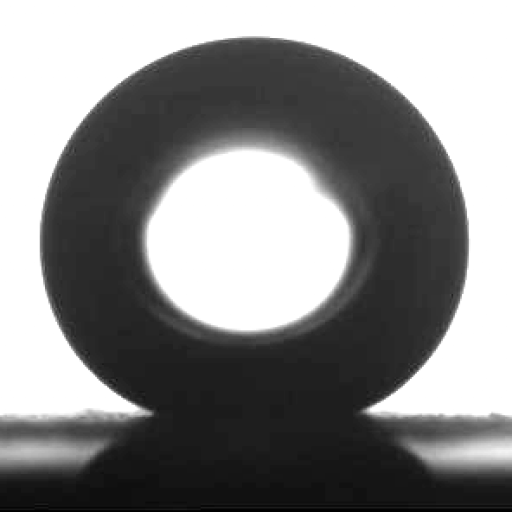Capillary Origami
The word “hydrophobic” means fear of water. Teflon is the most hydrophobic material that chemistry can create (as evidenced by its use as a non-stick coating for cooking pans). Therefore, we would expect water and Teflon to want to avoid each other. However, when a droplet of water touches a thin sheet of Teflon, the Teflon wraps itself around the water droplet, as seen in the video below, provided courtesy of Prof. Tom McCarthy.
It seems that even Teflon prefers to cling to the surface of water rather than remain in contact with air.
Spontaneous wrapping of a droplet of water by Teflon is a form of Capillary Origami.
It is only when we make the Teflon surface superhydrophobic that the wrapping effect is suppressed. Image sequence (b) below shows a droplet being wrapped on a Teflon surface, whereas sequence (b) shows a similar droplet on a Teflon surface that has been made superhydrophobic. It is clear from sequence (b) that the droplet is not wrapped in this case.




Publications
- Teflon is Hydrophilic. Comments on Definitions of Hydrophobic, Shear versus Tensile Hydrophobicity, and Wettability Characterization L. Gao and T.J. McCarthy, Langmuir 24 (2009) 9183-9188
- All solids, including Teflon, are hydrophilic (to some extent), but some have roughness induced hydrophobic tendenciesG. McHale, Langmuir 25 (2009) 7185-7187
- Capillary origami and superhydrophobic membrane surfaces N.R. Geraldi, F.F. Ouali, R.H. Morris, G. McHale and M.I. Newton, Appl. Phys. Lett. 102 (2013) art. 214104.
